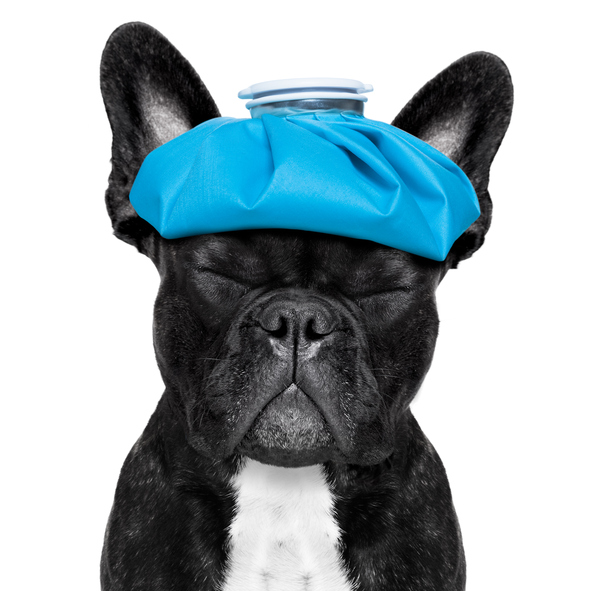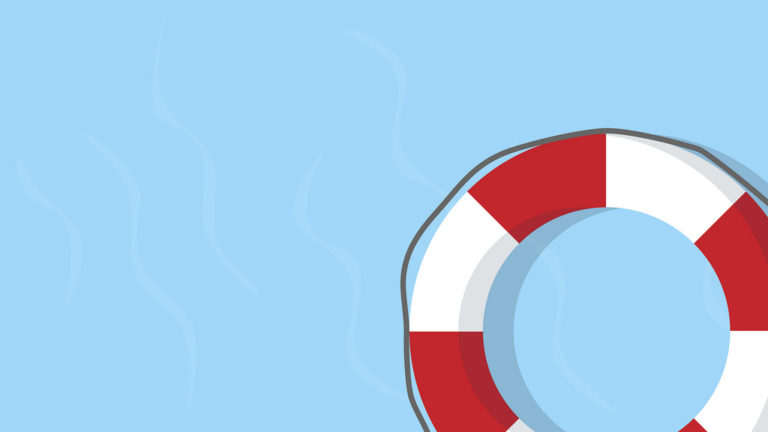Top 5 Herbs to Boost Immunity
Cold and flu season is upon us, which means that in the next 3-4 months, most of you will experience the frustrating muscle aches, fevers, runny nose, and coughing a cold or flu brings each year.
Herbs too, suffer from bacterial and viral infections, and have developed some unique ways for preventing infection and staying healthy. Many of these herbs can be used in humans (like you) and are great to keep around to use at the first sign of infection.
If used quickly, herbs can help you stay healthy through this cold/flu season and avoid the debilitating symptoms of colds and/or flus.
Herb functions—quick summary:
- Elderberry– Inhibits influenza virus. Needs to be taken at the first sign of sickness
- Cat’s Claw– Used to stimulate the immune system for conditions ranging from cancer to bacterial infection
- Echinacea– Shown to increase natural killer cells and T-lymphocytes. Preventative for colds and flu.
- Ginger– Ginger root is a high source of antioxidants, anti inflammatories, antibacterial, and antiviral compounds
- Lemon Balm– Antiviral, antibacterial, and calming qualities makes it a perfect addition to tea blends during the cold and flu season.
Here are the top five herbs to boost immunity and fight the common cold!
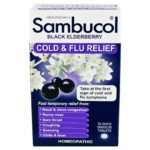 Elder (Sambucus nigra)
Elder (Sambucus nigra)
Traditional medical systems have made use of elder’s cold and flu fighting abilities long before humans even knew infection was the cause. Modern medical research has since discovered what makes elder so useful for respiratory tract infections like the common cold and influenza.
Elder berries, leaves, and bark contains a set of chemicals known as ribosomal inactivating proteins (RIP for short). These proteins have been shown to bind to, and inhibit the influenza virus, thus preventing it from infecting the cells lining our respiratory tract [1,2].
Due to the fact that elder works by preventing the cold and flu virus to infect the body’s cells, it needs to be taken at the first sign of infection. If too many cells become infected, elder is no longer useful.
Products like Sambucol® are readily available over the counter, and can be taken at the first sign of infection. It is also useful as a preventative after coming into contact with a sick person.
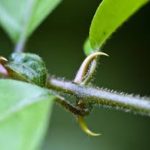 Cat’s Claw (Uncaria tomentosa)
Cat’s Claw (Uncaria tomentosa)
Cat’s claw comes from both the Amazon rainforest (Uncaria tomentosa), and Southeast Asia where it remains a popular herb in traditional Chinese medicine (Uncaria rhynchophylla).
The bark of Cat’s claw is used to stimulate the immune system for conditions ranging from cancer, to viral or bacterial infection. The oxindole alkaloids contained in the plant have been shown to reduce the negative side effects of viral-induced cytokines (responsible for the symptoms of colds and flus) [4], as well as improving our natural defense against the viruses and bacteria responsible for making us sick [5].
Cat’s claw can be used as a preventative for colds and flus during flu season by taking a supplement such as Raintree Formulas “Cat’s Claw” capsules on a daily basis.
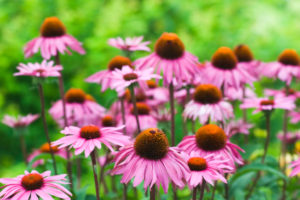
Echinacea (Echinacea purpurea)
Echinacea has been shown to increase natural killer cells and T-lymphocytes, which are a major player in the body’s immune defence against both bacterial and viral infection [3]. This traditional immune booster has had plenty of clinical research done to investigate how effective it really is at preventing colds and flus during those pesky flu seasons.
One such study investigating the effectiveness of an Echinacea based product known as Echinaforce®, found that it was able to inhibit cold and flu virus’ from entering and infecting our cells in a similar way to Elder [6]. Researchers concluded that Echinacea purpurea extracts are a relevant and cost effective treatment and preventative for colds and flu outbreaks. In my practice I make liberal use of Echinacea Premium from MediHerb
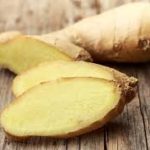 Ginger (Zingiber officinale)
Ginger (Zingiber officinale)
Ginger is a popular remedy for nausea and stomach discomfort, but what is less commonly known, is that ginger is an excellent treatment for colds and flus as well.
The fresh juice or tea of ginger root is a high source of antioxidants, anti inflammatories, antibacterial, and antiviral compounds making it useful for both the symptoms and mechanisms behind seasonal colds and flus. [7, 8].
To use ginger, simply boil ¾ of an inch of fresh ginger root in water for 30 minutes, or add to your juicer. Be warned that ginger can have a spicy flavor that not everyone likes.
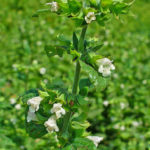 Lemon Balm (Melissa officinalis)
Lemon Balm (Melissa officinalis)
Lemon balm is a member of the mint family with a characteristic lemony flavour. This attribute, combined with its proven antiviral [9], antibacterial [10], and calming qualities makes it a perfect addition to tea blends during the cold and flu season.
The tannin content of the leaves have been shown to inhibit the influenza virus from entering the cells lining our respiratory tract, thus preventing infection from taking place. Lemon balm tea can be taken on a daily basis during the flu season to make it harder for the virus and bacteria responsible for seasonal cold and flus to establish themselves.
This delicious tea can go a long way in preventing infection and has the added benefit of calming our nerves and helping us settle down at the end of the day.
If you need more advice or have a question about how you can feel your best this winter, sign up for a complimentary 15-minute phone consultation.
References:
- Parikh, B.A.; Tumer, N.E. (2004). Antiviral activity of ribosome inactivating proteins in medicine. Mini Rev. Med. Chem. 2004, 4, 523–543.
- Zakay-Rones, Z., Varsano, N., Zlotnik, M., Manor, O., Regev, L., Schlesinger, M., & Mumcuoglu, M. (1995). Inhibition of several strains of influenza virus in vitro and reduction of symptoms by an elderberry extract (Sambucus nigra L.) during an outbreak of influenza B Panama. The Journal of Alternative and Complementary Medicine, 1(4), 361-369.
- Currier, N. L., & Miller, S. C. (2001). Echinacea purpurea and melatonin augment natural-killer cells in leukemic mice and prolong life span. The Journal of Alternative & Complementary Medicine, 7(3), 241-251.
- Sandoval-Chacon, M., Thompson, J. H., Zhang, X. J., Liu, X., Mannick, E. E., Sadowska-Krowicka, H., … & Miller, M. J. S. (1998). Antiinflammatory actions of cat’s claw: the role of NF-kB. Alimentary Pharmacology and Therapeutics, 12(12), 1279-1290.
- Wurm M, Kacani L, Laus G, et al. Pentacyclic oxindole alkaloids from Uncaria tomentosa induce human endothelial cells to release a lymphocyte-proliferation-regulating factor. Planta Med 1998;64:701-704.
- Pleschka, S., Stein, M., Schoop, R., & Hudson, J. B. (2009). Anti-viral properties and mode of action of standardized Echinacea purpurea extract against highly pathogenic avian influenza virus (H5N1, H7N7) and swine-origin H1N1 (S-OIV). Virology Journal, 6(1), 197.
- Imanishi, N., Andoh, T., Mantani, N., Sakai, S., Terasawa, K., Shimada, Y., … & Ochiai, H. (2006). Macrophage-mediated inhibitory effect of Zingiber officinale Rosc, a traditional oriental herbal medicine, on the growth of influenza A/Aichi/2/68 virus. The American journal of Chinese medicine, 34(01), 157-169.
- Wang, X., Jia, W., Zhao, A., & Wang, X. (2006). Anti‐influenza agents from plants and traditional Chinese medicine. Phytotherapy Research, 20(5), 335-341.
- Kucera, L. S., & Herrmann Jr, E. C. (1967). Antiviral Substances in Plants of the Mint Family (Labiatae). I. Tannin of Melissa officinalis.∗. Proceedings of the Society for Experimental Biology and Medicine, 124(3), 865-869. Chicago
- Čanadanović-Brunet, J., Ćetković, G., Djilas, S., Tumbas, V., Bogdanović, G., Mandić, A., … & Čanadanović, V. (2008). Radical scavenging, antibacterial, and antiproliferative activities of Melissa officinalis L. extracts. Journal of medicinal food, 11(1), 133-143.

